01:40
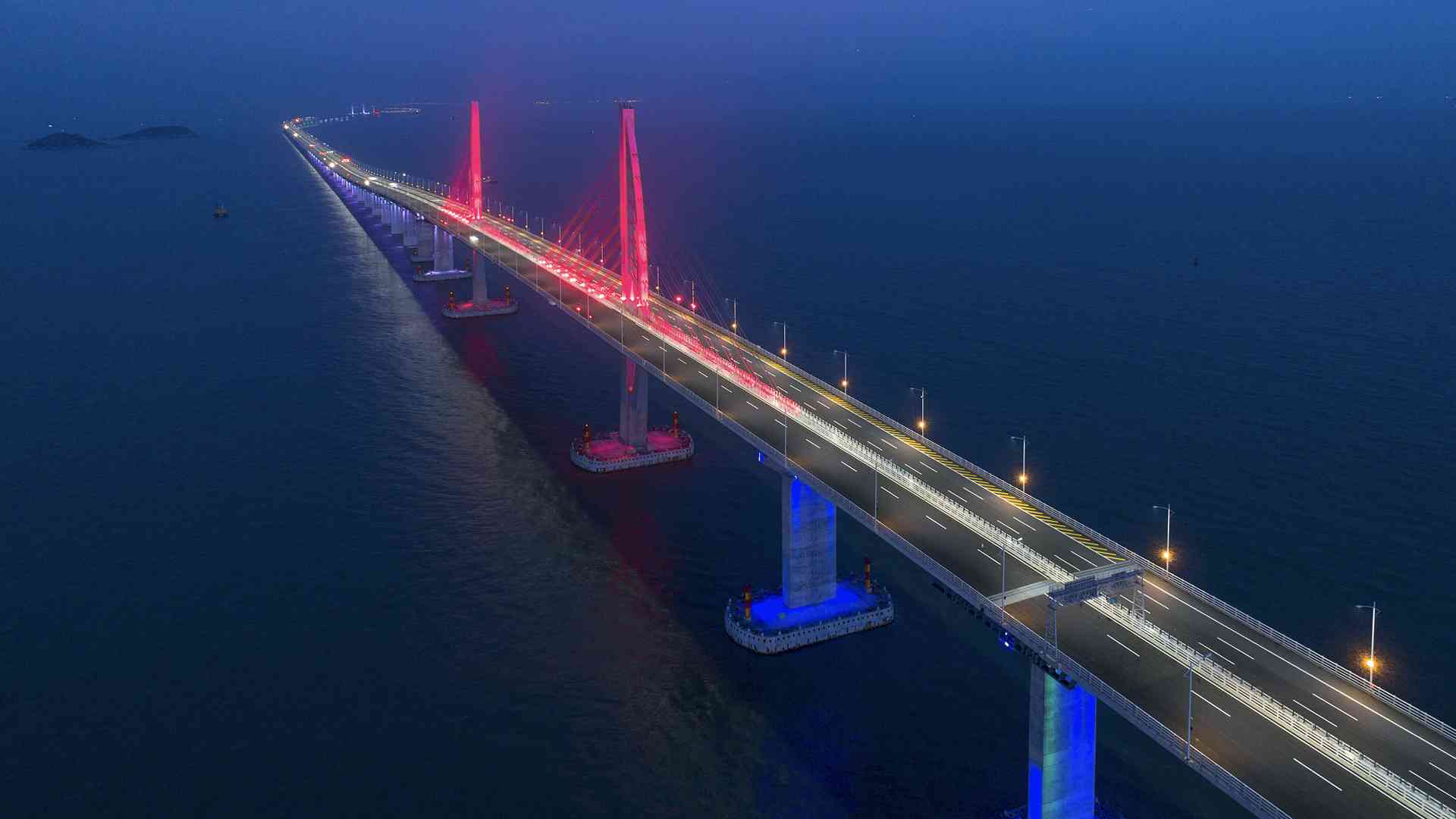
The Hong Kong-Zhuhai-Macao Bridge (HZMB) will open to the public on Wednesday, after nine years of construction. CGTN takes a look at the major highlights of building the world's longest sea-crossing bridge:
December 2009
The construction project broke ground with Chinese engineers resolute to prove their innovation in the field of engineering.
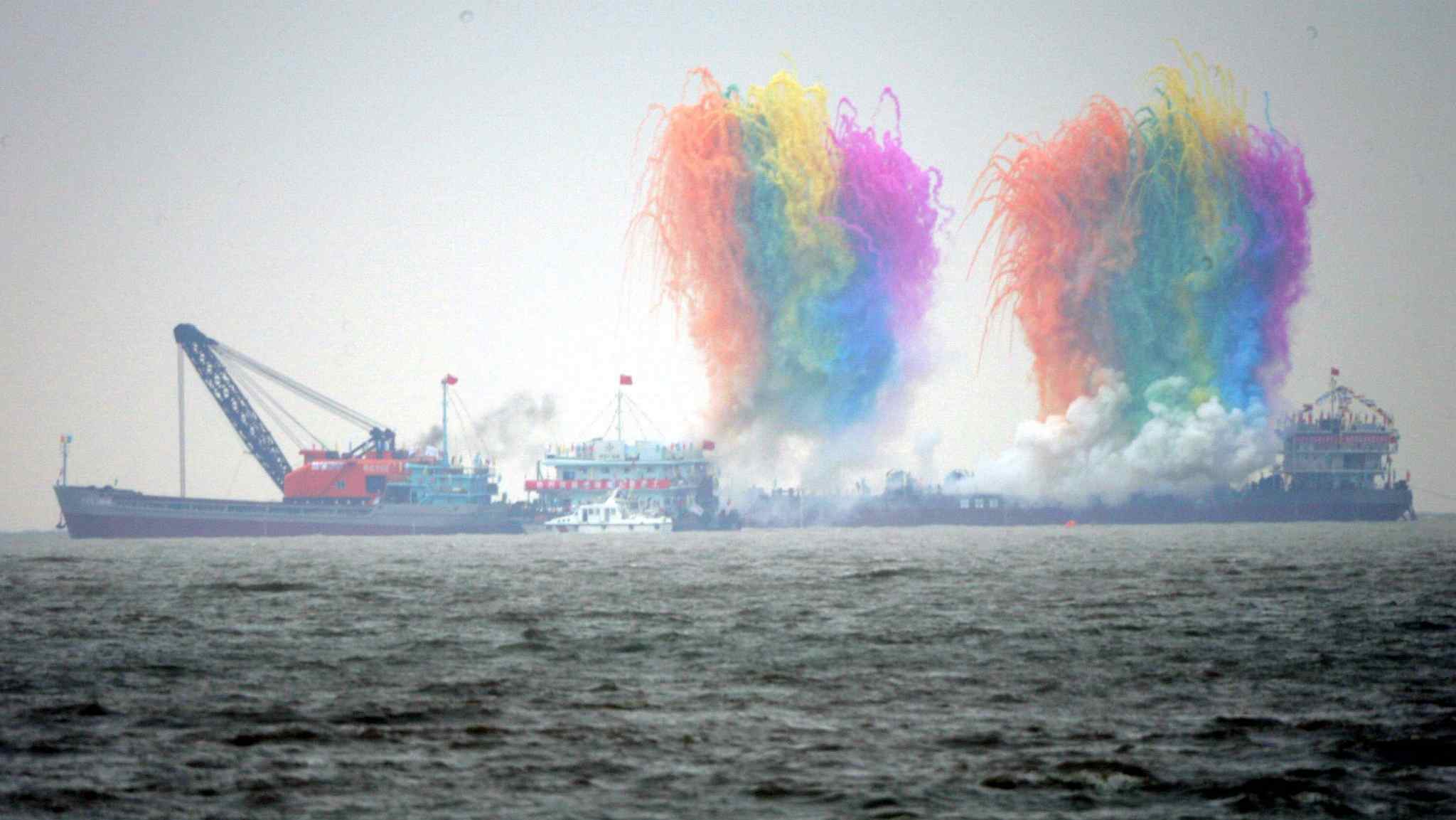
December 15, 2009: Construction of the HZMB begins. /VCG Photo
December 15, 2009: Construction of the HZMB begins. /VCG Photo
The whole project comprises 22.9 kilometers of steel bridges, two artificial islands, and the world's longest submerged sea tunnel. The mammoth structure is meant to meet the demand of passenger and freight land transport between the Chinese mainland and its Hong Kong and Macao Special Administrative Regions (SARs), and to establish a new land transport link between the eastern and western banks of the Pearl (Zhujiang) River.
December 2010
The construction of the tunnel and artificial islands formally began.
The 6.7-kilometer tunnel at a depth of 40 meters is the world's longest submerged sea tunnel. Two artificial islands, covering an area of 200,000 square meters, help create a smooth transition between the bridge sections and the tunnels.
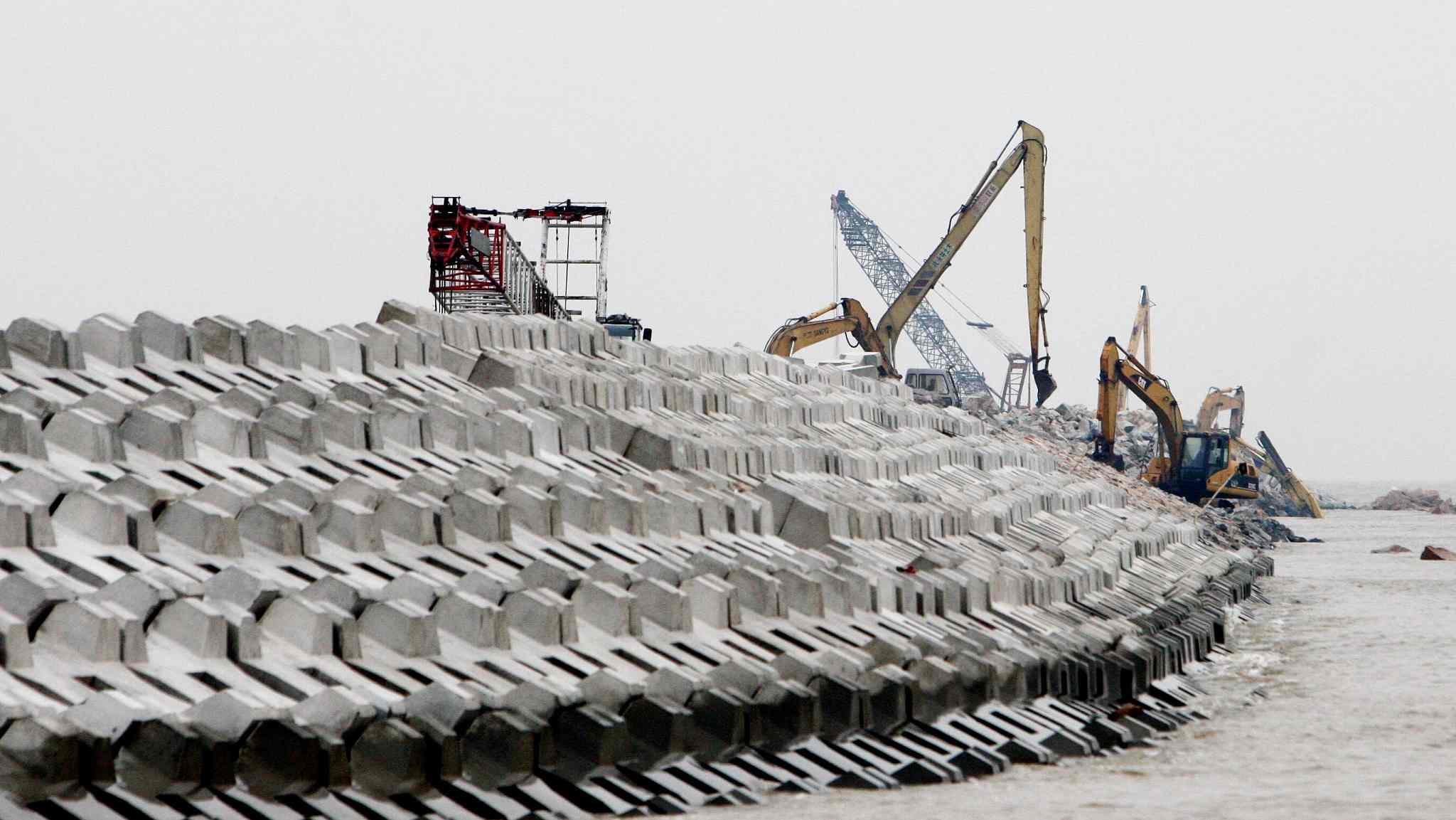
December 2010: The construction of the tunnel and the artificial islands begins. /VCG Photo
December 2010: The construction of the tunnel and the artificial islands begins. /VCG Photo
January 2014
HZMB's first steel box girder was erected in the Deep Water Zone.
The HZMB is formed of box girders, amounting to 420,000 tonnes of steel – roughly the weight of 60 Eiffel Towers or 10 Beijing National Stadiums.
The girders, each measuring 132.6 meters in length, were assembled in Zhongshan, Guangzhou City, and later shipped 40 kilometers to the construction site.
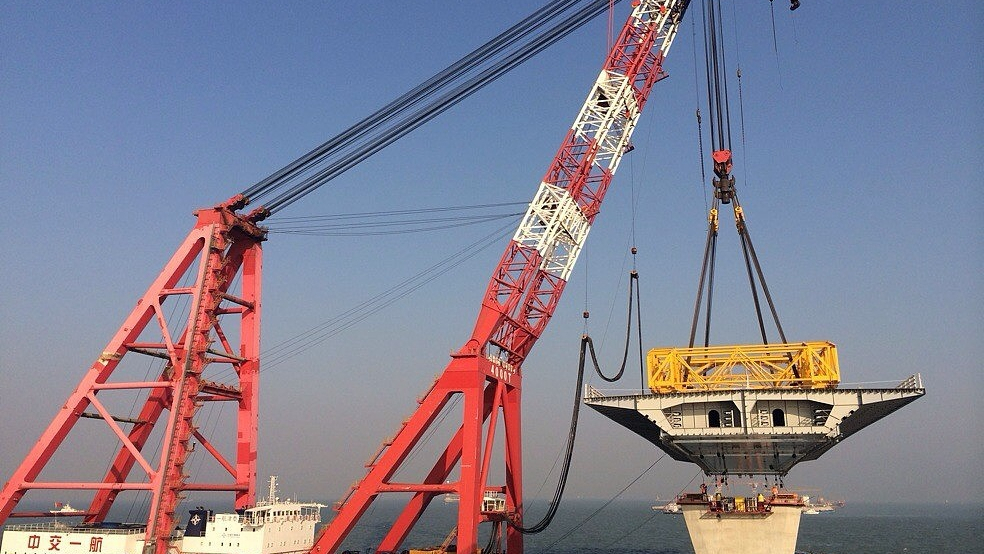
January 19, 2014: HZMB's first steel box girder is erected in the Deep Water Zone. /VCG Photo
January 19, 2014: HZMB's first steel box girder is erected in the Deep Water Zone. /VCG Photo
January 2015
Qingzhou Channel Bridge pylons of the HZMB were capped.
The steel pylon with a height of 160 meters and a weight of over 3,000 tonnes at 90 degrees above the sea is an unprecedented practice in the history of the world's bridge construction.
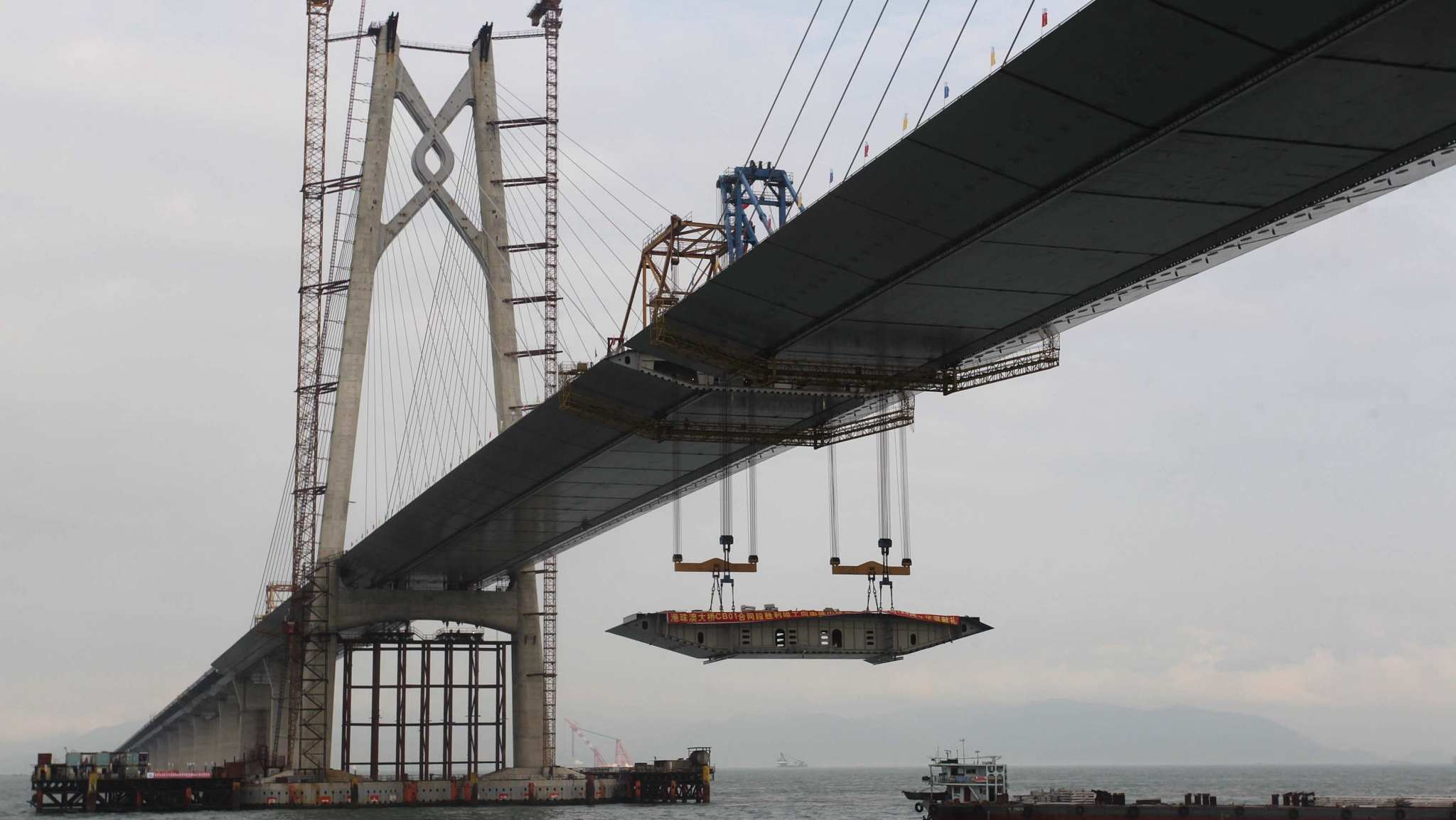
January 8, 2015: Qingzhou Channel Bridge pylons of the HZMB are capped. /VCG Photo
January 8, 2015: Qingzhou Channel Bridge pylons of the HZMB are capped. /VCG Photo
January 2016
HZMB's Zhuhai connection line, which links the north Hengqin and Hongwan interchanges, was officially opened on January 28, 2016.
The Zhuhai connection line is an important part of the HZMB. It starts from an artificial island in the Zhuhai-Macao port and ends at Hongwan, spanning 13.43 kilometers.
June 2016
Steel girders closed the last cap in the final arch and the structure was ready to be paved.
The bridge and tunnel system spanning the Pearl River estuary is an important waymark in the integration of Guangdong Province and the Hong Kong and Macao SARs.
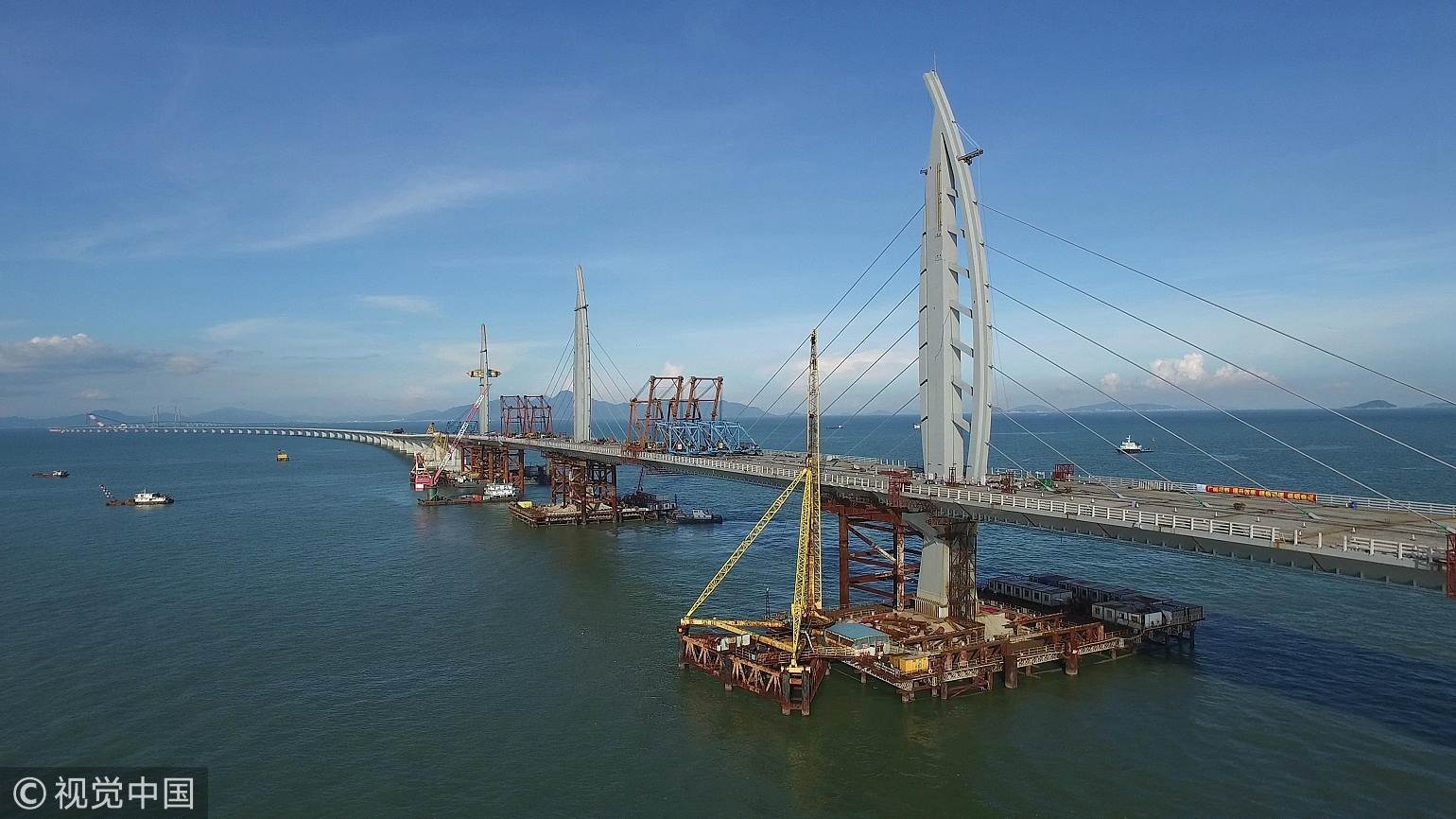
June 29, 2016: HZMB's main bridge section is all set for paving work. /VCG Photo
June 29, 2016: HZMB's main bridge section is all set for paving work. /VCG Photo
April 2017
HZMB's Gongbei Tunnel is completed.
The 2,741-meter-long Gongbei Tunnel is 21 meters high with an excavation area of 336.8 square meters, bigger than any highway tunnel in the world, according to the China Railway Construction Corporation (CRCC).
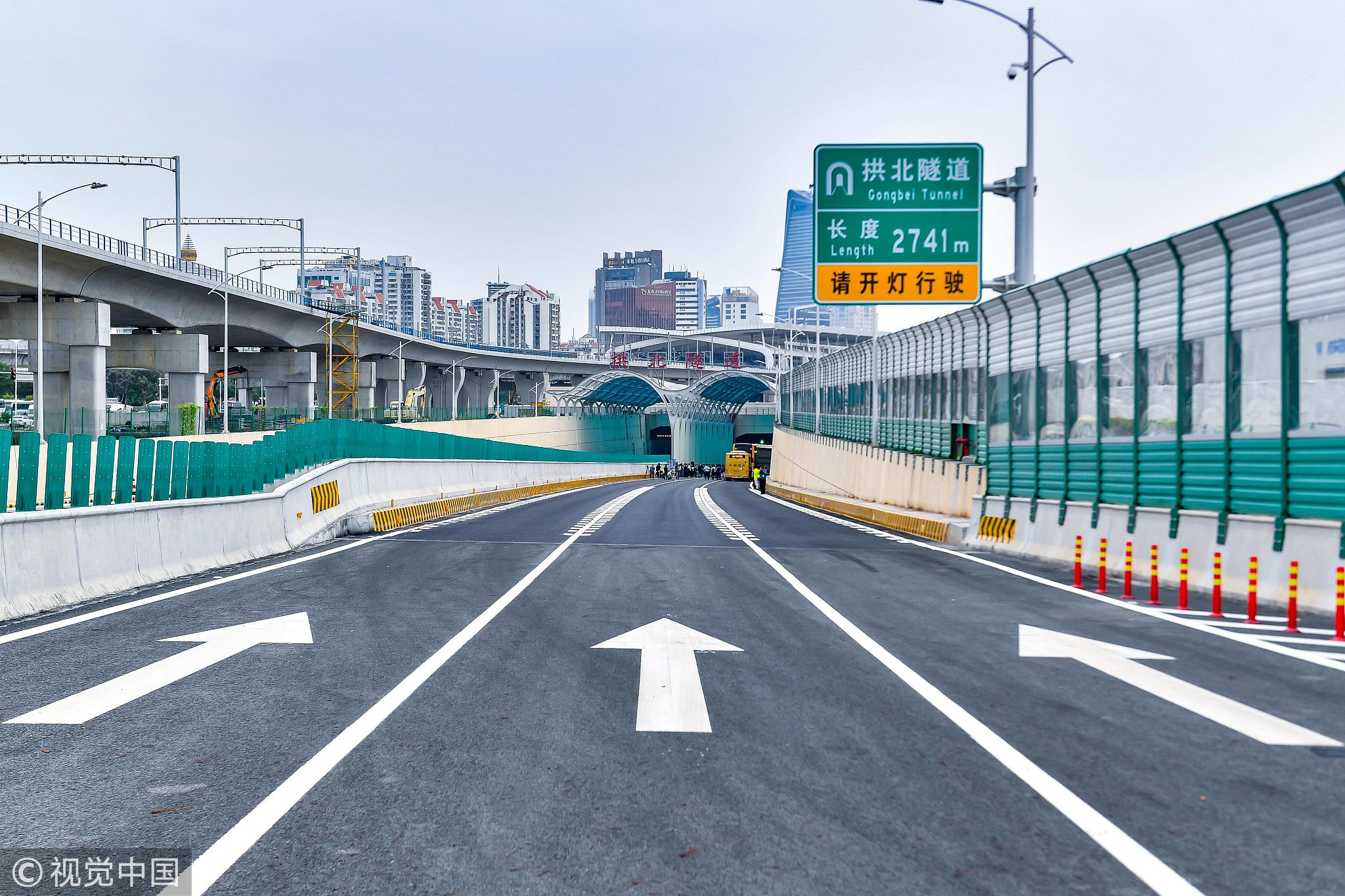
April 10, 2017: HZMB's Gongbei Tunnel is completed. /VCG Photo
April 10, 2017: HZMB's Gongbei Tunnel is completed. /VCG Photo
July 2017
The main section of the HZMB is completed.
The HZMB will cut travel time between Hong Kong and Zhuhai from three hours to merely 30 minutes, further integrating the cities in the Pearl River Delta, and accelerating the economic and sustainable development of the three places.
December 2017
The HZMB was illuminated on New Year's Eve to mark the completion of its main structure.
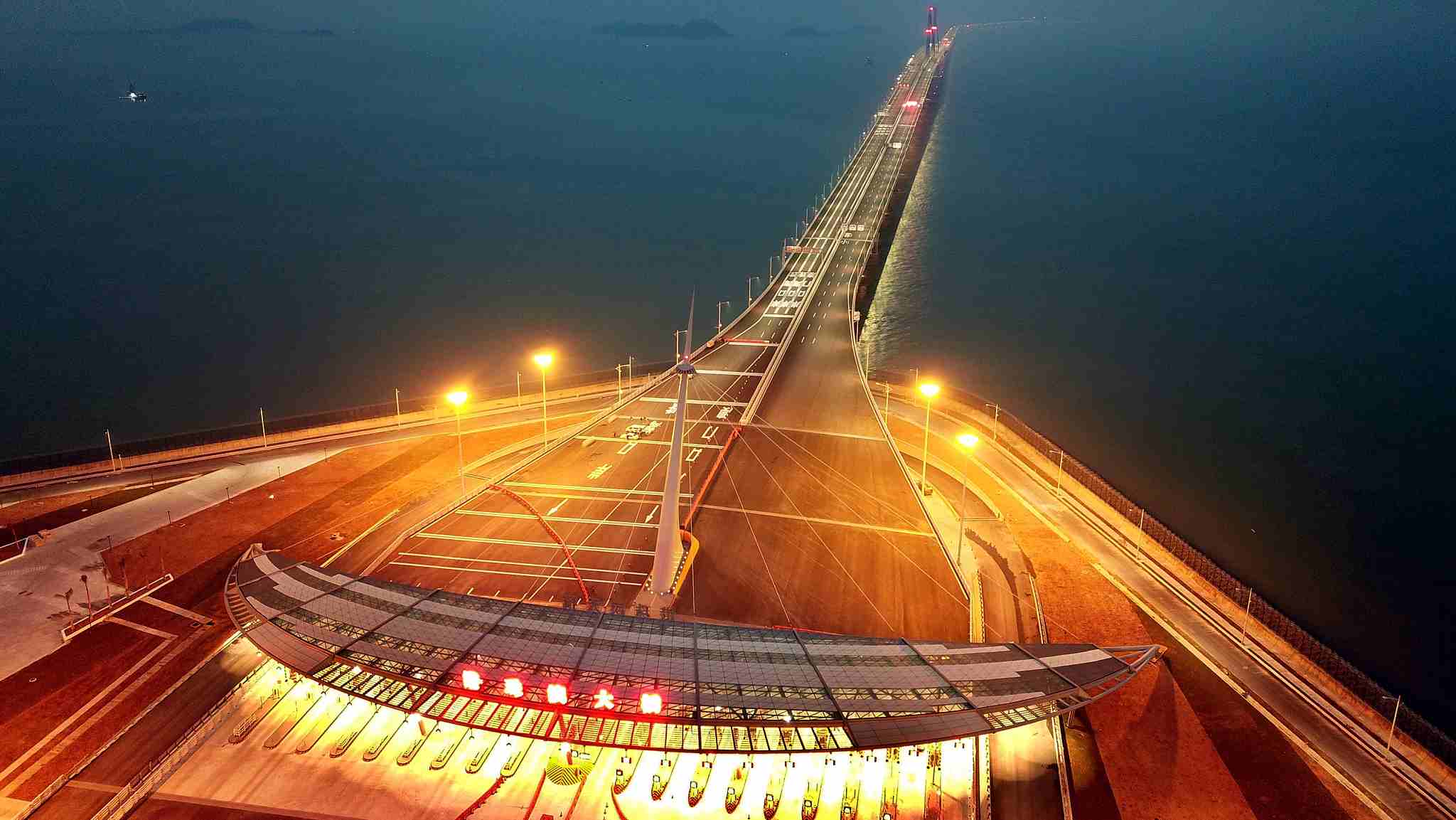
December 2017: A light-up ceremony for the HZMB Main Bridge. /VCG Photo
December 2017: A light-up ceremony for the HZMB Main Bridge. /VCG Photo
February 2018
The HZMB passed the quality inspection and was ready for traffic. The inspection came after a ceremony at the end of 2017 to mark the completion of the main body's construction.
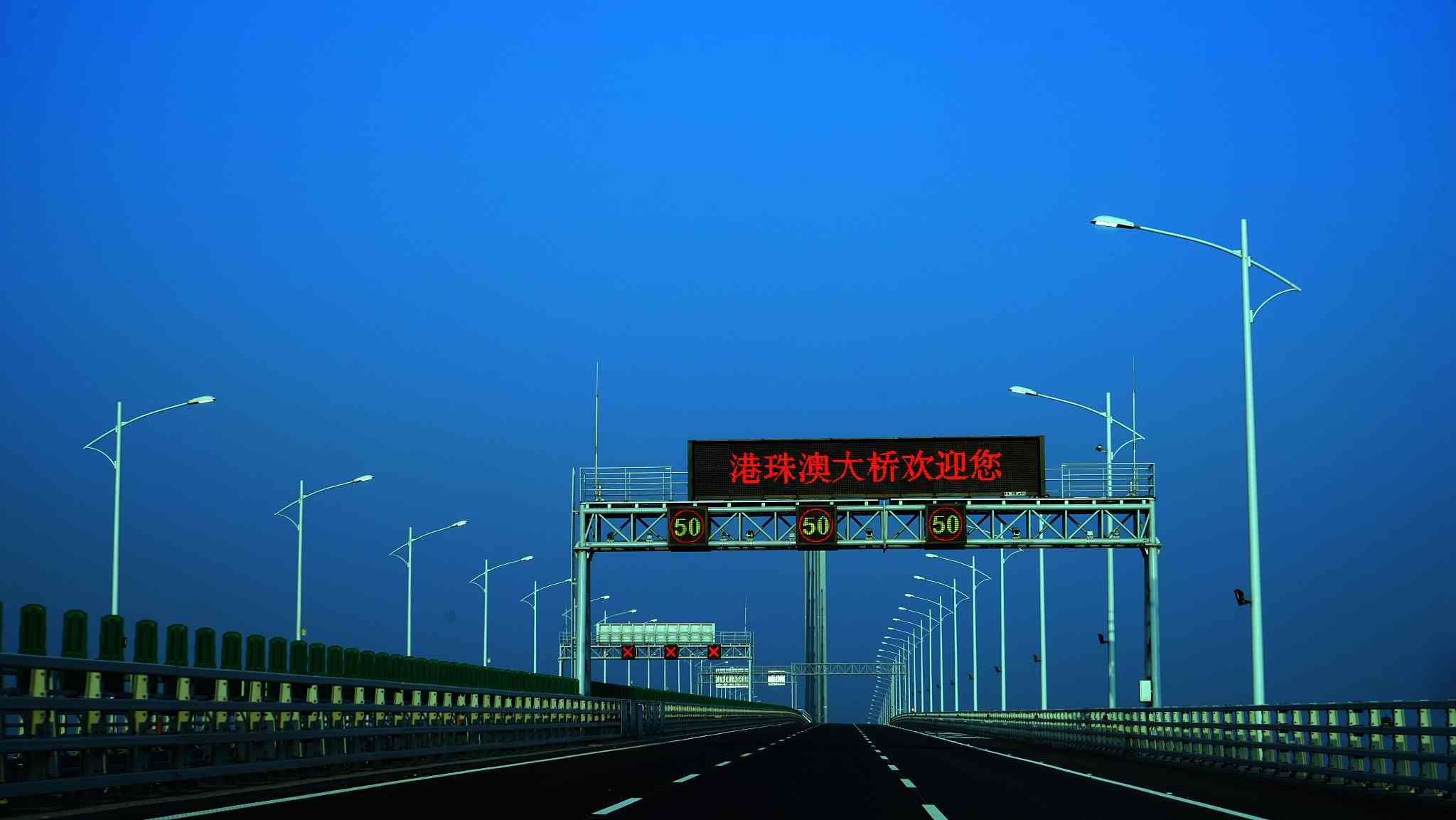
February 6, 2018: An inspection of HZMB's quality. /VCG Photo
February 6, 2018: An inspection of HZMB's quality. /VCG Photo
September 2018
Cross-border buses operated by Hong Kong companies on September 28 started trial runs on the HZMB prior to the bridge's upcoming operation.
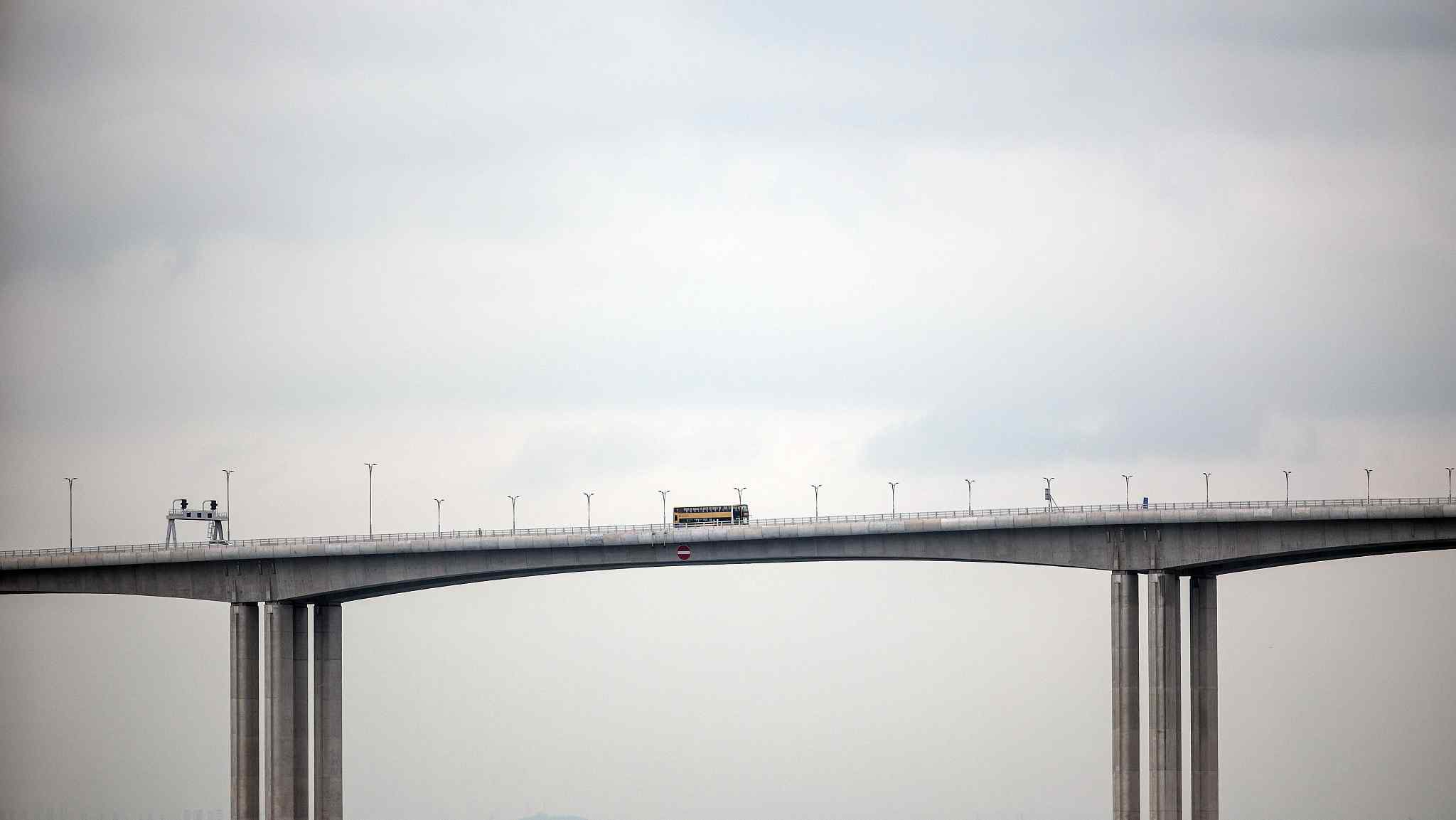
September 2018: A bus travels along the Hong Kong Link Road section of the HZMB offshore in Hong Kong. /VCG Photo
September 2018: A bus travels along the Hong Kong Link Road section of the HZMB offshore in Hong Kong. /VCG Photo











